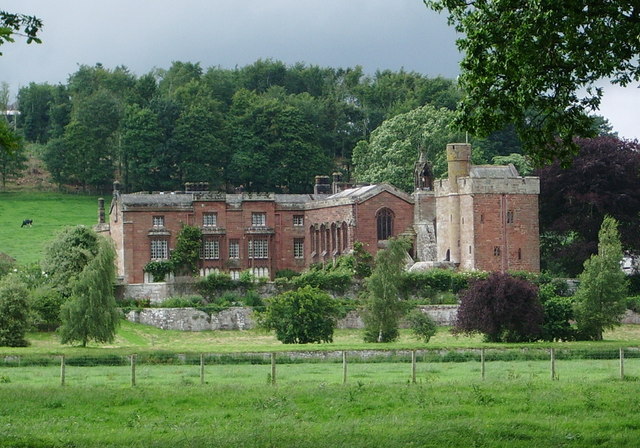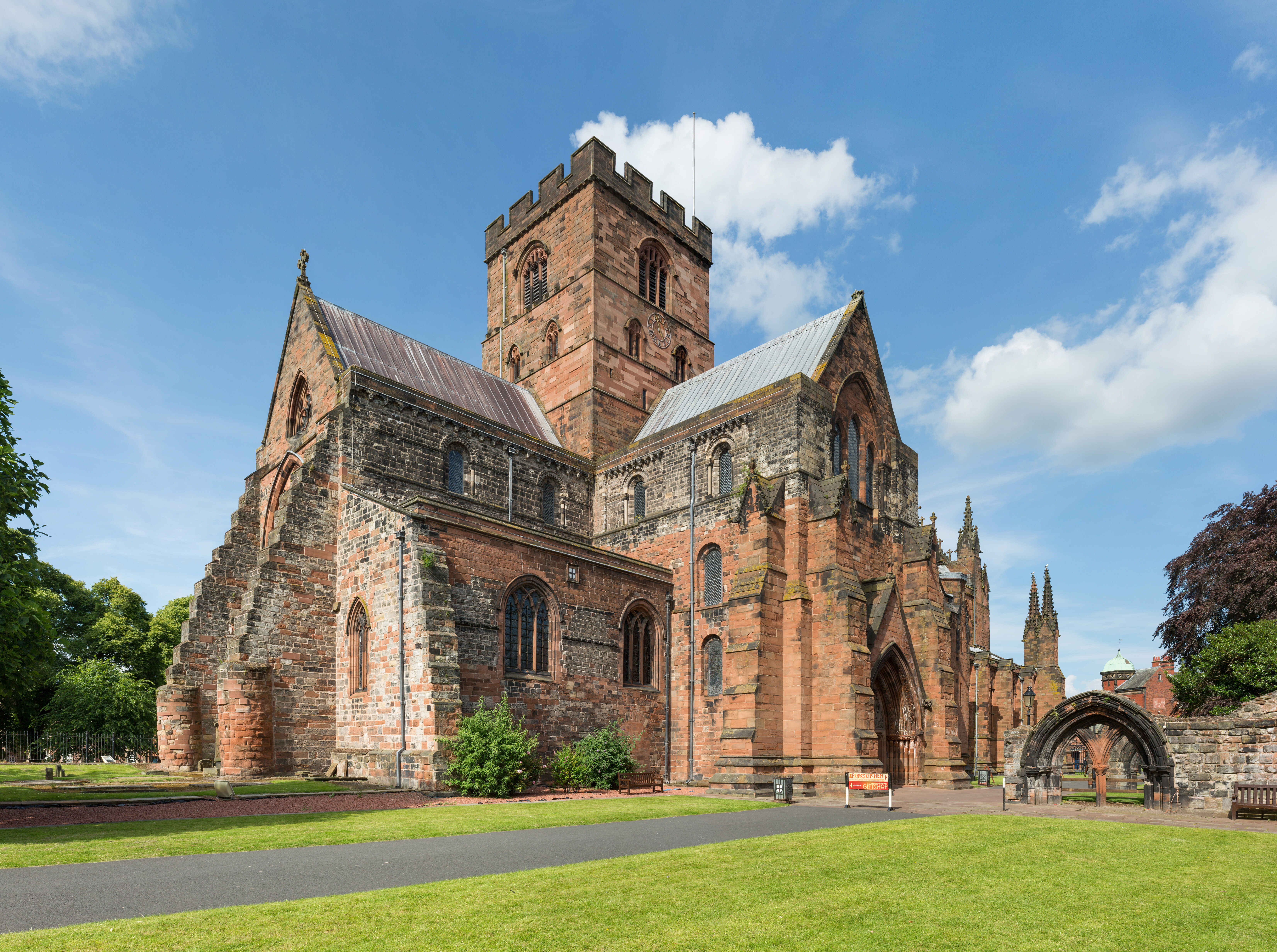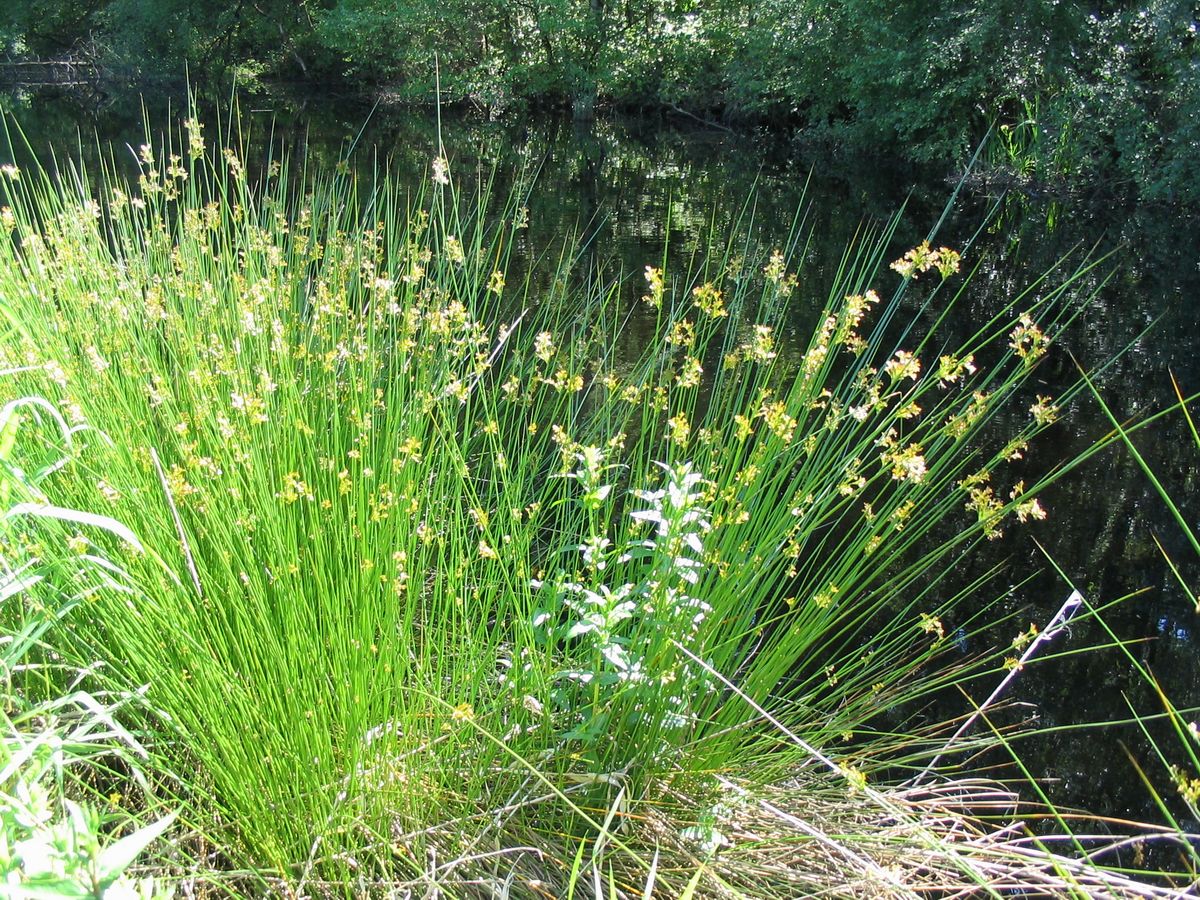|
Raughton Head
Raughton Head is a hamlet in Cumbria, England, located south of Carlisle. Toponymy the name Raughton Head is most likely derived from the Old English ''ragu–tūn'', meaning "Farmstead where moss or lichen grows", with the later addition of ''hēafod'', meaning "hill". It has been recorded as Ragton (1182) and Raughtonheved (1367). History Raughton Head was previously located within Castle Sowerby civil parish. The hamlet's previous church was dedicated to St. Jude. The church's building date is unknown, but it was rebuilt in 1678 by Edward Rainbowe and then again in 1760. Governance Raughton Head is primarily governed by Dalston civil parish. It is then governed by the City of Carlisle, and falls within the Carlisle constituency. Geography Raughton Head is located between two rivers, the River Caldew and the River Roe. Places of worship Raughton Head's only place of worship is All Saints Church, located within the Diocese of Carlisle. It was built in the 18th and 19th c ... [...More Info...] [...Related Items...] OR: [Wikipedia] [Google] [Baidu] |
Dalston, Cumbria
Dalston is a large village and civil parish within the Carlisle district of Cumbria, historically part of Cumberland. It is situated on the B5299 road south-south-west of Carlisle city centre, and approximately from Junction 42 of the M6 motorway. The village is on the River Caldew, just to the north of where the Roe Beck joins the river. It is served by the Dalston railway station on the Cumbrian Coast Line between , + . Historic buildings Rose Castle, home of the Bishop of Carlisle for many centuries until 2009, is within the parish of Dalston, from the heart of the village. The Architects Anthony Salvin and Thomas Rickman were responsible for the alterations which took place in the 19th Century. Dalston Hall is a grade II* listed fortified house which is now a country house hotel. Dalston has two churches; St Michael's + All Angels Church. Governance There is a county electoral division of Dalston, stretching north towards Carlisle, with a total population a ... [...More Info...] [...Related Items...] OR: [Wikipedia] [Google] [Baidu] |
City Of Carlisle
The City of Carlisle ( , ) is a local government district of Cumbria, England, with the status of a City status in the United Kingdom, city and non-metropolitan district. It is named after its largest settlement, Carlisle, Cumbria, Carlisle, but covers a far larger area which includes the towns of Brampton, Carlisle, Cumbria, Brampton and Longtown, Cumbria, Longtown, as well as outlying villages including Dalston, Cumbria, Dalston, Scotby and Wetheral. In 2011 the district had a population of 107,524, and an area of . Cumbria County Council Census key statistics summary The current city boundaries were set as part of the provisions of the Local Government Act 1972, and cover an merger (politics), amalgamation of two former local government districts, the County Borough of Carlisle, City and County Borough of Carlisle and the Border Rural District of Cumberland. The City of Carlisle shares a border with Scotland (to the north), and is bounded on the southwest by the borough of ... [...More Info...] [...Related Items...] OR: [Wikipedia] [Google] [Baidu] |
Cumbria
Cumbria ( ) is a ceremonial and non-metropolitan county in North West England, bordering Scotland. The county and Cumbria County Council, its local government, came into existence in 1974 after the passage of the Local Government Act 1972. Cumbria's county town is Carlisle, in the north of the county. Other major settlements include Barrow-in-Furness, Kendal, Whitehaven and Workington. The administrative county of Cumbria consists of six districts (Allerdale, Barrow-in-Furness, Carlisle, Copeland, Eden and South Lakeland) and, in 2019, had a population of 500,012. Cumbria is one of the most sparsely populated counties in England, with 73.4 people per km2 (190/sq mi). On 1 April 2023, the administrative county of Cumbria will be abolished and replaced with two new unitary authorities: Westmorland and Furness (Barrow-in-Furness, Eden, South Lakeland) and Cumberland (Allerdale, Carlisle, Copeland). Cumbria is the third largest ceremonial county in England by area. It is ... [...More Info...] [...Related Items...] OR: [Wikipedia] [Google] [Baidu] |
Carlisle (UK Parliament Constituency)
Carlisle is a Constituencies of the Parliament of the United Kingdom, constituency in Cumbria represented in the United Kingdom House of Commons, House of Commons of the Parliament of the United Kingdom, UK Parliament since 2010 United Kingdom general election, 2010 by John Stevenson (UK politician), John Stevenson of the Conservative Party (UK), Conservative Party. History Carlisle has existed as a seat since the Model Parliament in 1295. It was represented by Labour Party (UK), Labour Party MPs from 1964 to 2010, although the Conservative candidate came within 2% of taking the seat in 1983–1987, and has been held by John Stevenson (UK politician), John Stevenson of the Conservative Party (UK), Conservative Party since the 2010 United Kingdom general election, 2010 general election. Boundaries 1918–1955: The County Borough of Carlisle. 1955–1983: As 1918 but with redrawn boundaries. 1983–1997: The City of Carlisle wards of Belah, Belle Vue, Botcherby, Currock, Dento ... [...More Info...] [...Related Items...] OR: [Wikipedia] [Google] [Baidu] |
Hamlet (place)
A hamlet is a human settlement that is smaller than a town or village. Its size relative to a parish can depend on the administration and region. A hamlet may be considered to be a smaller settlement or subdivision or satellite entity to a larger settlement. The word and concept of a hamlet has roots in the Anglo-Norman settlement of England, where the old French ' came to apply to small human settlements. Etymology The word comes from Anglo-Norman ', corresponding to Old French ', the diminutive of Old French ' meaning a little village. This, in turn, is a diminutive of Old French ', possibly borrowed from ( West Germanic) Franconian languages. Compare with modern French ', Dutch ', Frisian ', German ', Old English ' and Modern English ''home''. By country Afghanistan In Afghanistan, the counterpart of the hamlet is the qala ( Dari: قلعه, Pashto: کلي) meaning "fort" or "hamlet". The Afghan ''qala'' is a fortified group of houses, generally with its ... [...More Info...] [...Related Items...] OR: [Wikipedia] [Google] [Baidu] |
Carlisle
Carlisle ( , ; from xcb, Caer Luel) is a city that lies within the Northern English county of Cumbria, south of the Scottish border at the confluence of the rivers Eden, Caldew and Petteril. It is the administrative centre of the City of Carlisle district which, (along with Cumbria County Council) will be replaced by Cumberland Council in April 2023. The city became an established settlement during the Roman Empire to serve forts on Hadrian's Wall. During the Middle Ages, the city was an important military stronghold due to its proximity to the Kingdom of Scotland. Carlisle Castle, still relatively intact, was built in 1092 by William Rufus, served as a prison for Mary, Queen of Scots in 1568 and now houses the Duke of Lancaster's Regiment and the Border Regiment Museum. In the early 12th century, Henry I allowed a priory to be built. The priory gained cathedral status with a diocese in 1133, the city status rules at the time meant the settlement became a city. ... [...More Info...] [...Related Items...] OR: [Wikipedia] [Google] [Baidu] |
Old English
Old English (, ), or Anglo-Saxon, is the earliest recorded form of the English language, spoken in England and southern and eastern Scotland in the early Middle Ages In the history of Europe, the Middle Ages or medieval period lasted approximately from the late 5th to the late 15th centuries, similar to the post-classical period of global history. It began with the fall of the Western Roman Empire .... It was brought to Great Britain by Anglo-Saxon settlement of Britain, Anglo-Saxon settlers in the mid-5th century, and the first Old English literature, Old English literary works date from the mid-7th century. After the Norman conquest of 1066, English was replaced, for a time, by Anglo-Norman language, Anglo-Norman (a langues d'oïl, relative of French) as the language of the upper classes. This is regarded as marking the end of the Old English era, since during this period the English language was heavily influenced by Anglo-Norman, developing into a phase know ... [...More Info...] [...Related Items...] OR: [Wikipedia] [Google] [Baidu] |
Castle Sowerby
Castle Sowerby is a civil parish in the Eden District of Cumbria, England. In 2001 it had a population of 337, increasing to 344 at the 2011 Census, and includes the hamlets of How Hill, Millhouse, Newlands, Sour Nook, Southernby and Sowerby Row. Located north of Sowerby Row is Thistlewood Farmhouse, consisting of a pele tower probably built in the early 15th century, with 16th century alterations, and an extension built in the late 17th century. The 12th century and later St Kentigern's Church is Grade II* listed. Castle Sowerby was one of the manors which formed part of the Honour Honour (British English) or honor (American English; see spelling differences) is the idea of a bond between an individual and a society as a quality of a person that is both of social teaching and of personal ethos, that manifests itself as a ... of Penrith which has been owned at various times by the Neville Earls of Westmorland, the English Crown, the Earls and Dukes of Portland and ... [...More Info...] [...Related Items...] OR: [Wikipedia] [Google] [Baidu] |
Edward Rainbowe
Edward Rainbowe or Rainbow (1608–1684) was an English academic, Church of England clergyman and a noted preacher. He was Master of Magdalene College, Cambridge, Vice-Chancellor of the University of Cambridge and Bishop of Carlisle. Life He was born on 20 April 1608 at Blyton in Lindsey, Lincolnshire, where his father Thomas Rainbowe was vicar. His mother, Rebecca, daughter of David Allen, rector of the neighbouring parish of Ludborough, was educated in Latin, Greek, and Hebrew. Edward's godfather, Edward Wray of Rycot, was second son of Sir Edward Wray of Glentworth in Lincolnshire. The Wrays possessed influence, and the connection proved important to the young Rainbowe. After spending a short time at Queen Elizabeth's High School, Gainsborough, he was sent in April 1620 to Peterborough, to be under Dr John Williams, then one of the prebendaries, and an old friend of his father. When, in the following year, Williams was preferred to the deanery of Westminster an ... [...More Info...] [...Related Items...] OR: [Wikipedia] [Google] [Baidu] |
River Caldew
The River Caldew is a river running through Cumbria in England. The river rises high up on the northern flanks of Skiddaw, in the Northern Fells area of the English Lake District, and flows in a northerly direction until it joins the River Eden on the north side of the city of Carlisle. The Cumbria Way follows most of the course of the river, from its early stages in the ''Skiddaw Forest'' to Carrock Fell and again from Caldbeck through to the centre of Carlisle. Etymology " Probably 'the cold river', from OE 'cald' and OE 'éa' 'river', influenced by OFr 'ewe' 'water'....However, the possibility that this is a Brit. shname meaning 'swift river' from the same root as 'Calder' cannot be ruled out altogether." (OE= Old English, OFr=Old French, Brit.= British language). Source of river The River Caldew's source is high up on Skiddaw, between the summit and Sale How. Candleseaves Bog is an area of wetland between Skiddaw and Great Calva that contributes to the ... [...More Info...] [...Related Items...] OR: [Wikipedia] [Google] [Baidu] |
Roe Beck
Roe Beck also known as the River Roe in its lower reaches, is a beck that flows through Cumbria, England. It is a lower tributary of the River Caldew which it joins near Gaitsgill south of Dalston. The total length of the beck including Peel Gill is and it has a catchment of , which includes the area of its major tributary the River Ive. Course Its headwaters rise on high ground near Hardrigg Hall between Lamonby and Skelton, it then flows north-west where it is joined by Peel Gill near Skelton Wood End. Other tributaries such as Whale Gill and Cockley Beck merge as it flows past Sowerby Row and Middlesceugh, where it turns northwards to meet its tributary, the River Ive near Highbridge. Beyond this confluence it is known as the River Roe, here it changes back to a north-westerly direction and is then joined by Bassen Brook before continuing through Stockdalewath, to join the River Caldew near Gaitsgill. Hydrology The flow of the beck has been measured at a gauging station i ... [...More Info...] [...Related Items...] OR: [Wikipedia] [Google] [Baidu] |
Diocese Of Carlisle
The Diocese of Carlisle was created in 11 April 1132 by Henry I out of part of the Diocese of Durham, although many people of Cumbric descent in the area looked to Glasgow for spiritual leadership. The first bishop was Æthelwold, who was the king's confessor and became prior of the Augustinian priory at Nostell in Yorkshire. Carlisle was thus the only cathedral in England to be run by Augustinians instead of Benedictines. This only lasted until the reign of Henry III however, when the Augustinians in Carlisle joined the rebels who temporarily handed the city over to Scotland and elected their own bishop. When the revolt was ended, the Augustinians were expelled. The seat of the diocese is the Cathedral Church of the Holy and Undivided Trinity in Carlisle. The Diocese covers most of the non-metropolitan county of Cumbria; Alston Moor is part of the Diocese of Newcastle. The diocese originally only covered the northern parts of Cumberland and Westmorland, and expan ... [...More Info...] [...Related Items...] OR: [Wikipedia] [Google] [Baidu] |








